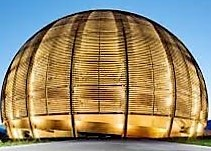Speaker
Description
In the frame of the PANDORA (Plasmas for Astrophysics Nuclear Decays Observation and Radiation for Archaeometry) project [1], a new experimental approach aims at measuring, for the first time, in-plasma $\beta$-decays lifetimes as a function of thermodynamical conditions of a plasma-environment able to mimic some stellar-like conditions. Theoretical predictions [2] and former experiments on fully stripped ions [3] have shown that the ionization state can dramatically modify $\beta$-isotopes lifetimes (e.g., by bound state $\beta$-decay). The experimental approach consists in a direct correlation of nuclear activity and plasma environment, and this can be done by simultaneously identifying and discriminating - through an innovative multi-diagnostic system which will work synergically with a $\gamma$-rays detection system - the photons emitted by the plasma (from microwaves to hard X-ray domains) and $\gamma$-rays emitted after the isotope $\beta$-decay [4, 1]. In this work the numerical simulations performed in GEANT4 focused on the design of the array of $\gamma$-ray detectors and investigating the total efficiency in terms of detectors type and of their optimal displacement around the trap (including collimation systems and shielding) are presented. The best compromise, due to technical constraints, is to use an array of 14 HPGe detectors (70% of relative efficiency with a total photopeak efficiency of $\sim$ 0.1 - 0.2$\%$) and about 16 non-invasive diagnostic tools surrounding the high-performance totally superconducting plasma trap. The feasibility of the PANDORA experiment was specifically checked by "virtual experiment runs", by exploring the feasibility of measuring the decay rates in terms of 3$\sigma$-confidence-level of several nuclei involved in s-processing nucleosynthesis (i.e., $^{134}$Cs, $^{94}$Nb, $^{176}$Lu) of nuclear astrophysical strong interest. The experimental run duration needed to get enough statistical significance should take several days to 3 months, depending on the isotope under investigation, thus shading new light on the role of weak interaction on the stellar nucleosynthesis. The specific sensitivity for discriminating among the set of theoretical predictions [5] was investigated as well as eventually fit the nucleosynthesis data [6] which disagree from the current decay rate predictions [2].
[1] D. Mascali et al., A novel approach to β-decay: Pandora, a new experimental setup for future in-plasma measurements. Universe 8, 80 (2022). DOI: https://doi.org/10.3390/universe8020080
[2] K. Takahashi and K. Yokoi, Beta-decay rates of highly ionized heavy atoms in stellar interiors, Atomic Data and Nuclear Data Tables 36, 3 (1987). DOI: https://doi.org/10.1016/0092-640X(87)90010-6
[3] Y. A. Litvinov and F. Bosch, Beta decay of highly charged ions, Rep. Prog. Phys. 74 016301 (2011). DOI: https://doi.org/10.1088/0034-4885/74/1/016301
[4] E. Naselli et al., Multidiagnostics setups for magnetoplasmas devoted to astrophysics and nuclear astrophysics research in compact traps, Journal of Instrumentation 14, 10008 (2019). DOI: https://doi.org/10.1088/1748-0221/14/10/C10008
[5] S. Taioli et al., Theoretical estimate of the half-life for the radioactive 134cs and 135cs in astrophysical scenarios, arXiv:2109.14230v1 [astro-ph.SR] (2021)
[6] S. Palmerini et al., Presolar Grain Isotopic Ratios as Constraints to Nuclear and Stellar Parameters of Asymptotic Giant Branch Star Nucleosynthesis, The Astrophysical Journal 921 (1), 7 (2021). DOI: https://doi.org/10.3847/1538-4357/ac1786
